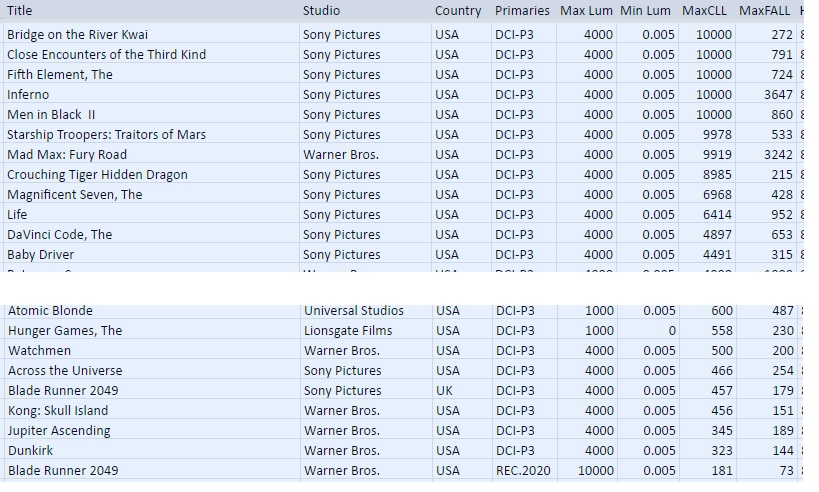Wow, so many clueless people in this thread and most probably don't even own an OLED lol.....
The "recommended" luminance for professional calibration is 120 nits for "SDR" content..... IIRC this equates to about 25-40% OLED light depending on your panel....... Yes, if your room and TV is setup poorly with regards to glare and bright lighting then you "may" have to use a higher OLED light setting, however, anyone who is serious about good picture quality and willing to spend ££££'s etc. to get the best IQ should have their room setup properly in order to get the best from their display and no I don't mean, in pitch black conditions (although this is most ideal especially with HDR content, otherwise you are just losing the effect of a self-emitting display), just simply have your TV placed appropriately with controlled lighting i.e. not with a massive window right behind shining in on the TV or if you do have to setup the TV in this way then invest in blackout blinds/curtains.
Rtings recommended settings aren't that good either, these are better:
https://docs.google.com/spreadsheet...osQ79CUArQv9doO4UvVCCXtgFw/edit#gid=854865656
Also, the default setting for ISF bright or technicolor is 80% oled light setting and even for ISF dark preset, it is 60%, far exceeding the recommended nits for SDR content.
For HDR content, OLED light setting should be left at 100% along with dynamic contrast set to low as this is recommended for the best tone mapping algorithm (this may be different for other brands of OLED TVs or/and when using different methods of playing back HDR content though i.e. through MPC + madvr or a blu ray player), if anything, burn in is less likely to happen with HDR content on OLED screens because of the constant changing frames with regards to the brightness of scenes always fluctuating, each pixel will adjust its brightness accordingly, the only time HDR will ever prove to be a problem for image retention/burn in is with HDR games and its in game HUDs i.e. the prominent ones which don't hide automatically or/and have 100% opacity.
The "recommended" luminance for professional calibration is 120 nits for "SDR" content..... IIRC this equates to about 25-40% OLED light depending on your panel....... Yes, if your room and TV is setup poorly with regards to glare and bright lighting then you "may" have to use a higher OLED light setting, however, anyone who is serious about good picture quality and willing to spend ££££'s etc. to get the best IQ should have their room setup properly in order to get the best from their display and no I don't mean, in pitch black conditions (although this is most ideal especially with HDR content, otherwise you are just losing the effect of a self-emitting display), just simply have your TV placed appropriately with controlled lighting i.e. not with a massive window right behind shining in on the TV or if you do have to setup the TV in this way then invest in blackout blinds/curtains.
Rtings recommended settings aren't that good either, these are better:
https://docs.google.com/spreadsheet...osQ79CUArQv9doO4UvVCCXtgFw/edit#gid=854865656
Also, the default setting for ISF bright or technicolor is 80% oled light setting and even for ISF dark preset, it is 60%, far exceeding the recommended nits for SDR content.
For HDR content, OLED light setting should be left at 100% along with dynamic contrast set to low as this is recommended for the best tone mapping algorithm (this may be different for other brands of OLED TVs or/and when using different methods of playing back HDR content though i.e. through MPC + madvr or a blu ray player), if anything, burn in is less likely to happen with HDR content on OLED screens because of the constant changing frames with regards to the brightness of scenes always fluctuating, each pixel will adjust its brightness accordingly, the only time HDR will ever prove to be a problem for image retention/burn in is with HDR games and its in game HUDs i.e. the prominent ones which don't hide automatically or/and have 100% opacity.


